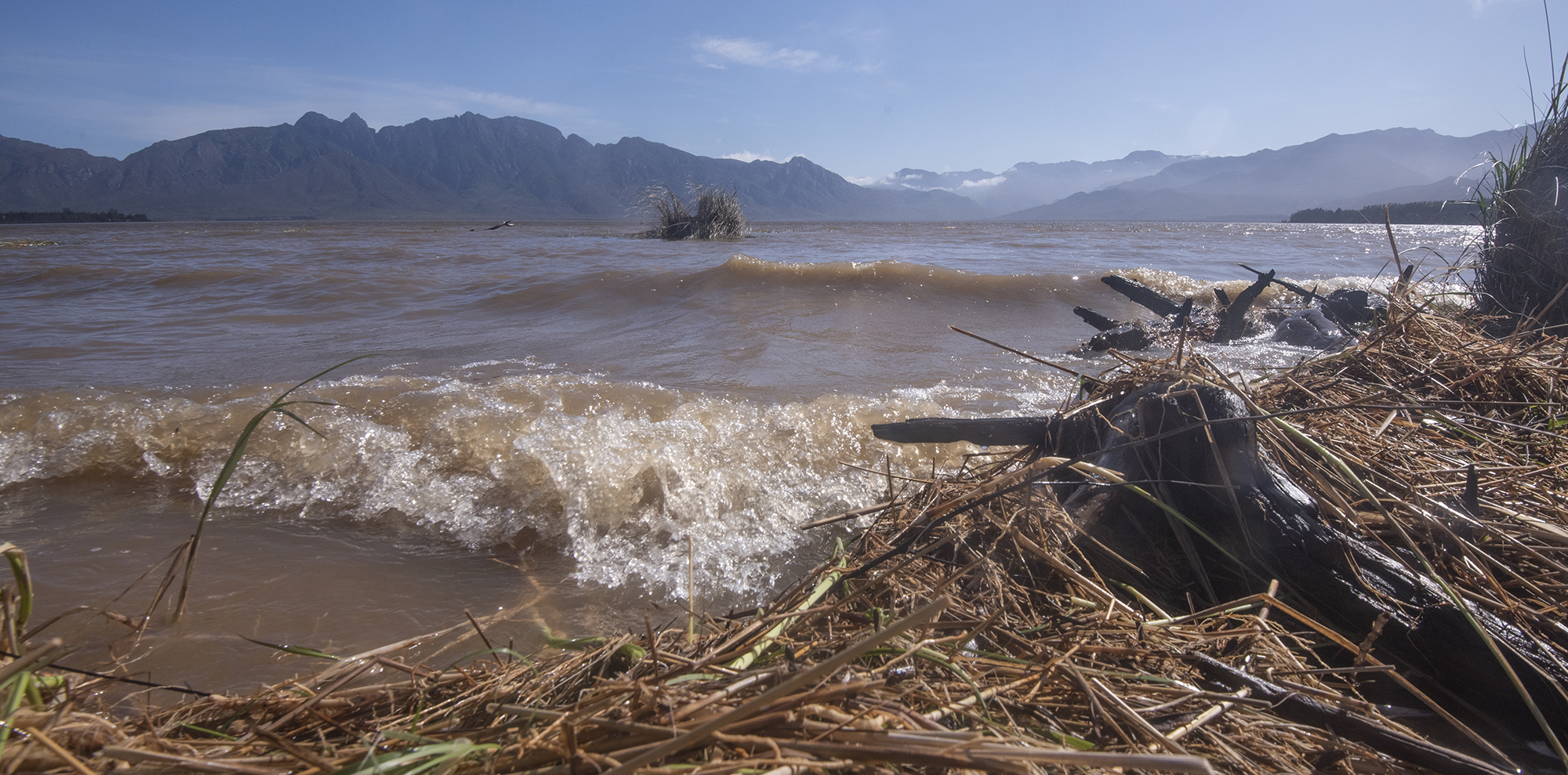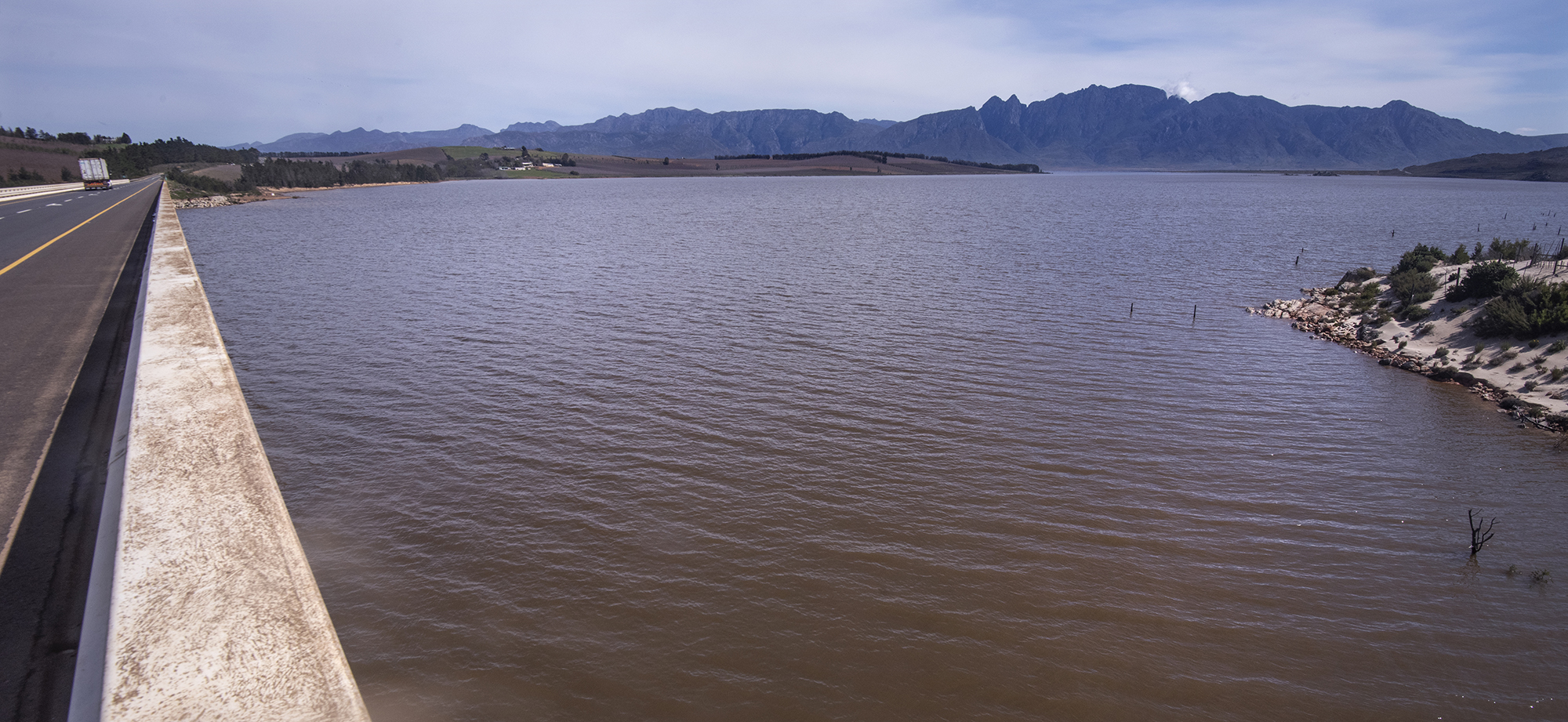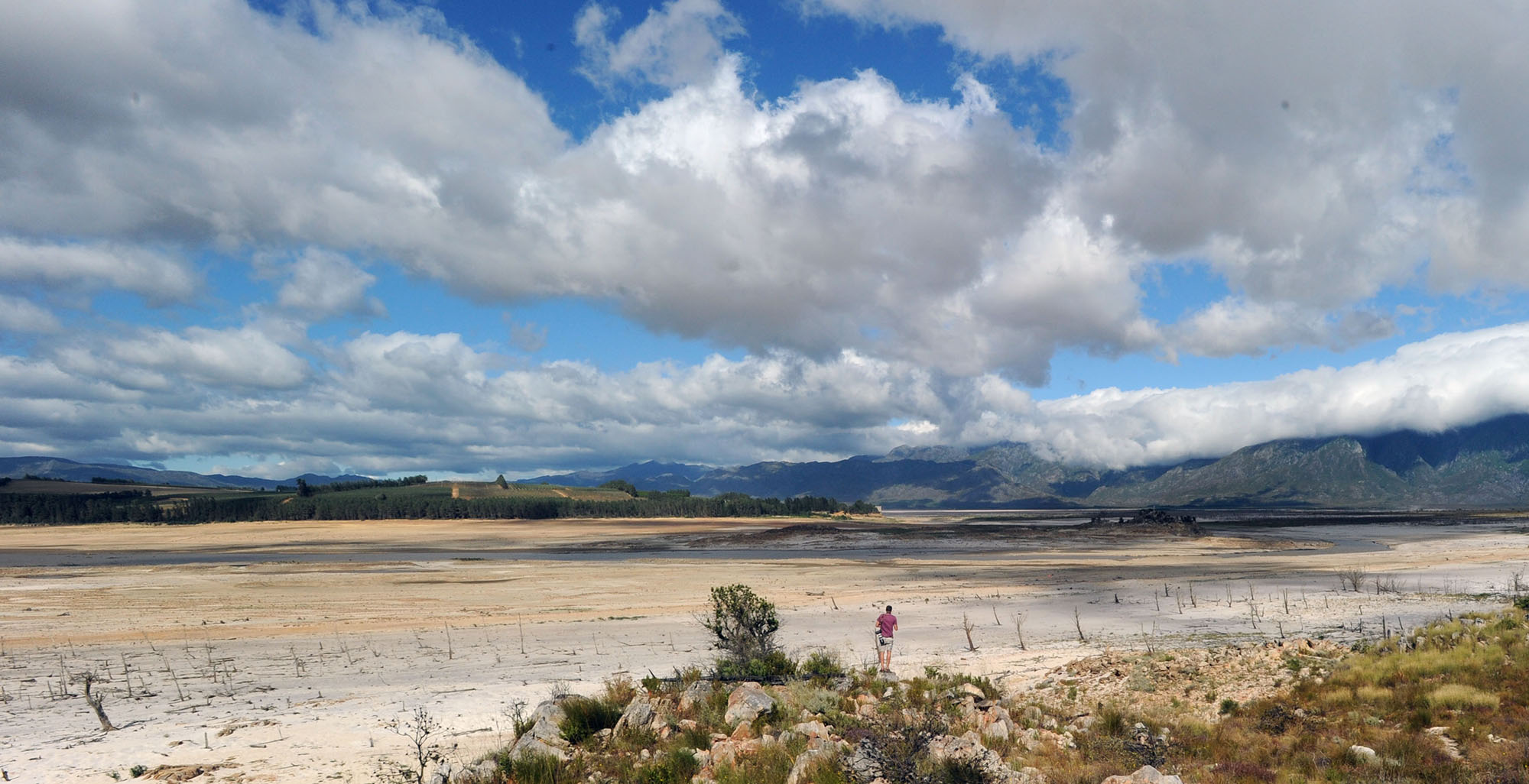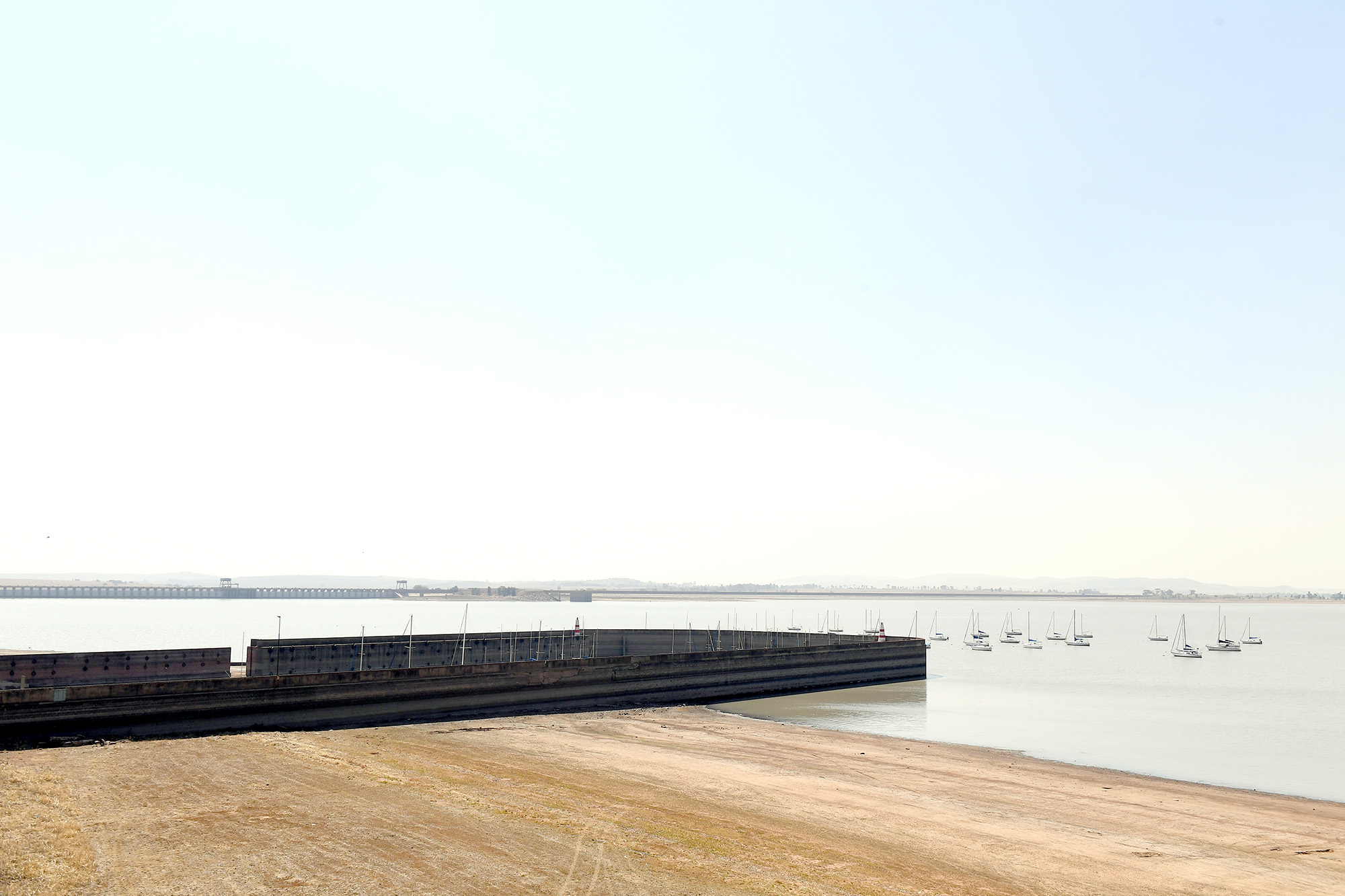Two years ago the Western Cape was on the brink of Day Zero, but now the province’s dams are 76% full, while the Vaal Dam in Gauteng is less than 40% full.
“The Earth goes through wet and dry cycles throughout history. It’s been happening longer than we’ve been alive. People just don’t understand the cyclical nature of the weather,” said Gideon Groenewald, a hydrologist for Gift of the Givers’ drought intervention.

Theeswaterskloof Dam, the biggest in the Western Cape is at just over 90% full on 3 September 2020. (Photo: Brenton Geach)
Recent rainfalls in Cape Town have “pushed total rainfall for 2019/20 close to the long-term average and dams are close to full for the first time since 2013/2014,” said Xanthea Limberg, mayoral committee member for water and waste. In 2018 the dams in Cape Town were 70% full for the first time since 2015.

A view from the bridge crossing the Theeswaterskloof Dam on 3 September 2020. (Photo: Brenton Geach)
A week ago Theewaterskloof Dam, the Western Cape’s largest dam, was 87.9% full, and by Thursday 3 September it was 92.3% full. Theewaterskloof Dam holds 480,000 megalitres of water when full. The dam is one of six that form the Western Cape Water Supply System.

Theewaterskloof Dam on 25 January 2018. (Photo: Gallo Images / Brenton Geach)
While the Western Cape’s dams are considerably fuller than they were two years ago, the water level in the Vaal Dam in Gauteng has been declining. The dam, the fourth largest in South Africa, has “been getting emptier every two weeks,” said Groenewald.
The Vaal Dam supplies water to about 46% of South Africa’s economy and 33% of the population, and forms part of the Integrated Vaal River System (IVRS). In September 2019 the dam was 58% full, while this week it was just under 40% full. At full capacity, it carries two million megalitres of water, with the exterior surface spanning more than 322km.

Water levels at the Vaal dam are at just below 50%. (Photo: Felix Dlangamandla)
Sputnik Ratau, the spokesperson for the Department of Water and Sanitation, said that the water in the Vaal Dam “is declining but it is expected for the period that we’re in. Until we get the rain in late spring and summer, the decline will continue.”
The average annual rainfall in South Africa is estimated to be about 464mm a year, lower than the global average of 860mm. Most parts of the country receive summer rainfall, with only the Western Cape receiving most of its rain in winter.
“If it doesn’t rain before the end of November, Joburg and Pretoria will be in serious trouble,” said Groenewald.
But the Integrated Vaal River System, which supplies 14 dams including in Free State, Mpumalanga and Northern Cape, is 60% full, said Ratau.
While there have been predictions that Gauteng could be next to be faced with a Day Zero, when the taps run dry, Mike Muller, a part-time adviser to the water and sanitation minister and the chairperson of the Water Institute of Southern Africa’s technical committee, doesn’t think that will happen soon.
“…[W]ater disasters are what we call ‘slow-onset’ disasters… you can see them coming a long time ahead. For this year, there are no major drought risks for either the City of Johannesburg or Cape Town. But in both cases, if we (and that is as a country, not the city) fail to do the right things, they will both be at serious risk,” said Muller.
Another issue in Gauteng is the delay of Phase 2 of the Polihali Dam in Lesotho, which would increase the current water supply from 780 million cubic metres to 1,255 million cubic metres a year. Phase 1 was completed in 2003, Phase 2 was set to be completed in 2020, but due to repeated delays, it will now be completed in 2025.
“Implementation of the Polihali Dam, Phase 2 of the Lesotho Highlands Water project in Lesotho, is slipping into a further round of delays and cost increases. And every year it is delayed makes it more likely that we will repeat Cape Town’s painful self-inflicted drought disaster,” wrote Muller.
The City of Cape Town is on Level 1 of water restrictions, as are the City of Tshwane and the City of Johannesburg. Residents are asked to use water sparingly.
While politicians blamed the water crisis on climate change, Muller wrote: “It is by no means certain that climate change will dramatically reduce water supplies. Rising temperatures is one trend that forecasters confidently and correctly predict. But it’s not certain what that temperature increase will do to water availability.
“In terms of water restrictions, every end of the hydrological year, which is at the end of November, we sit with the water users and we use a model where we look at our current [water] storage and whether it will take us to the next winter season. Based on that we decide to lift restrictions or impose more,” said Zolile Simawo, the head of Water Sector Support in the Department of Water and Sanitation.
In the City of Cape Town (see full list of restrictions here), Level 1 water restrictions mean that watering lawns using hosepipes and sprinklers can only happen for an hour on Tuesdays and Saturdays. In the City of Johannesburg (see full list of restrictions here), Level 1 water restrictions mean that residents are not allowed to water their gardens between 6am and 6pm in the summer months. Water restrictions apply only to the use of municipal drinking water.
Regarding tariffs, Limberg said: “…[T]he City is selling approximately 30% less water than before the drought but is facing additional costs that come with increasing our resilience. It is important that the City cover its costs to ensure that the maintenance and augmentation programmes can be carried out.” DM


















 Become an Insider
Become an Insider
Comments - Please login in order to comment.